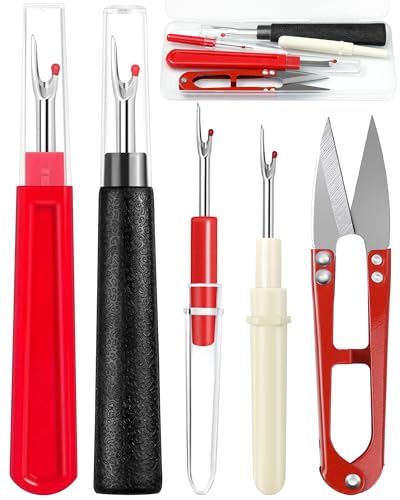Working with straps can be tricky, especially when you need that perfect finish. That’s where a loop turner comes in handy. Whether you’re crafting a stylish bag or repairing a favorite piece, mastering this tool can make all the difference.
Imagine effortlessly creating smooth, professional-looking straps without the frustration. With a loop turner, you can achieve clean edges and consistent loops every time. It’s a simple tool that brings big improvements to your projects, making your crafting experience more enjoyable and your results more polished.
Dive in to discover easy steps and tips on how to use a loop turner for straps. You’ll soon see how this handy tool can elevate your work and save you time, turning your creative ideas into beautifully finished products.
Importance Of A Loop Turner For Straps
A loop turner guarantees straps display smooth edges and consistent loops. Professional results enhance project appearance, increasing overall quality. Efficiency improves as a loop turner accelerates the turning process, reducing crafting time. Durability benefits from uniform loops, decreasing fraying and extending strap lifespan. Precision ensures accurate measurements, maintaining symmetry across multiple straps. Versatility allows handling various strap materials, accommodating different project requirements.
- Smooth Edges: Prevent fraying and ensure a clean finish.
- Consistent Loops: Maintain uniform size and shape for all straps.
- Time Efficiency: Speed up the turning process, allowing for quicker project completion.
- Enhanced Durability: Strengthen straps by reducing the risk of wear and tear.
- Accurate Measurements: Achieve precise dimensions, ensuring symmetrical designs.
- Material Versatility: Adapt to different fabrics and strap types seamlessly.
Benefits Of Using A Loop Turner
Using a loop turner streamlines strap creation, offering several advantages:
- Professional Appearance: Achieve a polished look with minimal effort.
- Increased Productivity: Complete more straps in less time, boosting overall output.
- Ease Of Use: Simplify the turning process, making it accessible for all skill levels.
- Consistent Quality: Ensure each strap meets the same high standards, enhancing project uniformity.
- Reduced Material Waste: Minimize errors, conserving materials and lowering costs.
Choosing The Right Loop Turner
Selecting the appropriate loop turner involves considering specific factors:
- Material Compatibility: Ensure the tool suits the fabrics you use frequently.
- Size Requirements: Match the turner size to the strap dimensions for optimal results.
- Ergonomic Design: Choose a comfortable tool to reduce hand fatigue during extended use.
- Durability: Opt for high-quality materials that withstand regular use without wear.
- Ease Of Cleaning: Select a loop turner that can be easily maintained for longevity.
Maintenance Tips For Your Loop Turner
Proper maintenance extends the lifespan of your loop turner:
- Regular Cleaning: Remove fabric residues after each use to prevent buildup.
- Proper Storage: Keep the tool in a dry, safe place to avoid damage.
- Inspection: Check for wear and tear periodically, replacing parts as needed.
- Lubrication: Apply appropriate lubricants to moving parts to ensure smooth operation.
- Usage Guidelines: Follow manufacturer instructions to maintain functionality and performance.
Common Mistakes To Avoid
- Overloading The Tool: Use only recommended materials to prevent tool damage.
- Improper Handling: Handle with care to avoid bending or breaking components.
- Neglecting Maintenance: Skipping regular upkeep can reduce tool efficiency and lifespan.
- Incorrect Size Selection: Choose the wrong size turner, leading to inconsistent results.
- Ignoring Instructions: Follow usage guidelines to ensure optimal performance and safety.
Tools And Materials Needed
- Loop Turner: Choose a loop turner that matches your strap’s material and thickness for optimal performance.
- Strap Material: Select fabric, leather, or webbing based on your project’s specific requirements.
- Cutting Tool: Utilize sharp scissors or a rotary cutter to achieve precise strap lengths.
- Measuring Tool: Use a measuring tape or ruler to ensure accurate strap dimensions.
- Edge Finishing Supplies: Incorporate an emery board, sandpaper, or edge paint to create smooth strap edges.
- Fastening Hardware: Gather hooks, buckles, or other necessary hardware to secure strap ends effectively.
- Marking Tool: Employ fabric chalk or a pen to mark cutting and folding lines accurately.
- Workspace: Set up a flat, stable surface with adequate lighting to facilitate accurate and comfortable work conditions.
- Safety Gear: Wear gloves and protective eyewear to ensure safety during the crafting process.
Step-By-Step Guide On Using A Loop Turner
Follow these steps to effectively use a loop turner and achieve professional-looking strap loops.
Preparing The Strap
- Measure your strap accurately with a ruler or measuring tape to ensure the correct length.
- Trim excess material using sharp scissors or a cutting tool for clean edges.
- Mark loop positions with a fabric marker or pencil for consistent placement.
- Select the appropriate loop size based on strap width and project needs.
Inserting The Loop Turner
- Align the loop turner tool with the marked loop position on your strap.
- Insert the loop turner’s hook under the strap edge carefully to prevent snags.
- Position the tool to distribute the loop evenly around the strap.
Turning The Loop
- Grasp the loop turner firmly to maintain control during the process.
- Rotate the handle smoothly, guiding the strap through the tool.
- Pull the strap through until the loop forms neatly and consistently.
Finishing The Process
- Secure the loop by tightening knots or applying adhesive as required.
- Inspect the loop for consistency and make adjustments if necessary.
- Clean the strap edges using edge finishing supplies to achieve a professional look.
Common Mistakes To Avoid
- Overloading the Loop Turner
Applying too much pressure deforms the tool, reducing its effectiveness.
- Improper Handling
Misaligning the loop turner can create inconsistent loops and rough edges.
- Neglecting Maintenance
Failing to clean and lubricate the tool shortens its lifespan and hampers performance.
- Incorrect Size Selection
Choosing a loop turner that doesn’t match your strap’s thickness results in uneven loops.
- Ignoring Instructions
Skipping the user manual leads to misuse and potential damage to both the tool and your straps.
- Using Dull Cutting Tools
Employing dull scissors or knives can cause frayed edges and make loop turning more difficult.

- Inadequate Marking
Not marking loop positions accurately leads to misaligned and uneven strap loops.
- Poor Workspace Setup
Working in a cluttered or poorly lit area increases the likelihood of mistakes and accidents.
- Skipping Safety Gear
Forgoing gloves or protective eyewear puts you at risk of injury during the crafting process.
- Rushing the Process
Hurrying through steps compromises the quality of the loops and the overall appearance of your straps.
Tips For Effective Use
- Choose the Right Loop Size
Select a loop turner that matches your strap’s width and material. Using an incompatible size can lead to uneven loops or damaged straps.
- Measure Accurately
« You Won’t Believe These Tips on How to Collaborate on a Sewing Project
10 Insider Secrets on How to Design a Custom Fabric Print Revealed »
Precisely measure the strap length before turning. Accurate measurements ensure consistent loop sizes and a professional finish.
- Maintain Tool Sharpness
Keep the loop turner sharp by regularly inspecting and sharpening its edges. A dull tool makes it harder to create clean loops.
- Apply Consistent Pressure
Use steady and even pressure when operating the loop turner. Consistency prevents irregular loop shapes and ensures uniformity across all straps.
- Secure the Workspace
Arrange a stable and well-lit workspace. A secure setup minimizes mistakes and enhances the quality of your looped straps.
- Regularly Clean the Tool
Remove debris and residue from the loop turner after each use. Clean tools perform better and last longer.

- Practice Proper Handling
Hold the loop turner firmly and handle it with care. Proper handling reduces the risk of accidents and tool damage.
- Use Appropriate Strap Materials
Choose strap materials that are compatible with your loop turner. Materials like leather, fabric, and webbing respond differently, affecting the looping process.
- Inspect Loops for Consistency
After turning, check each loop for uniformity. Consistent loops enhance the overall appearance and functionality of your straps.
- Store the Loop Turner Properly
Keep the tool in a dry, safe place when not in use. Proper storage prevents rusting and maintains the tool’s effectiveness.
- Follow Manufacturer Guidelines
Adhere to the instructions provided by the loop turner’s manufacturer. Following guidelines ensures optimal performance and longevity of the tool.

- Use Safety Gear
Wear gloves and protective eyewear while turning loops. Safety gear protects you from potential injuries during the crafting process.
- Avoid Overloading the Tool
Do not force the loop turner through thick or multiple layers of straps at once. Overloading can damage the tool and compromise loop quality.
- Plan Loop Positions Carefully
Mark loop positions accurately before turning. Precise markings lead to evenly spaced loops and a neat final product.
- Optimize Loop Turner Settings
Adjust the loop turner settings according to the strap’s thickness and material. Proper settings facilitate smooth and efficient looping.
Conclusion
Using a loop turner can truly transform your strap-making projects. You’ll find creating smooth and professional loops easier than ever. With the right tool and a bit of practice you can enhance both the look and durability of your straps.

Taking care of your loop turner ensures it remains a reliable part of your crafting toolkit. Remember to maintain it properly and avoid common pitfalls to keep your projects on point.
Embrace these tips and techniques and watch your crafting skills soar. Happy creating!

















